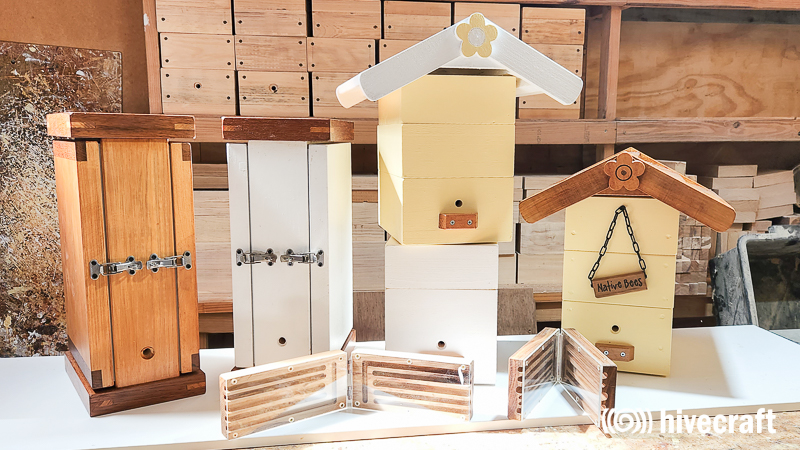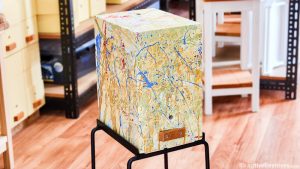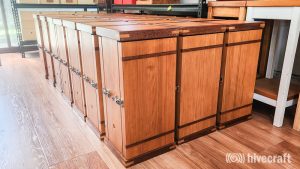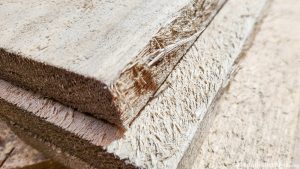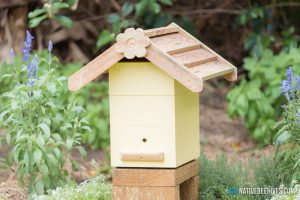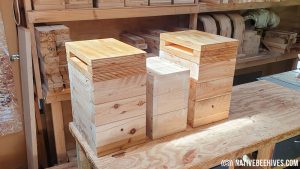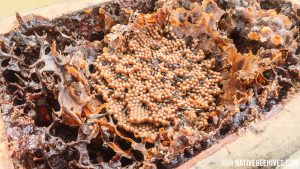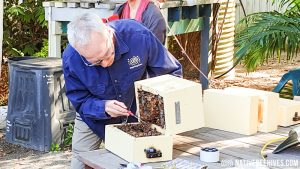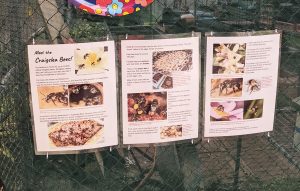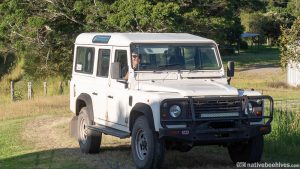Romina Rader – Senior Lecturer in Community Ecology at the University of New England, Armidale. Her research interests include the identity and performance of insect pollinators in crops, plant-animal interactions and the response of biodiversity to landscape and environmental change.
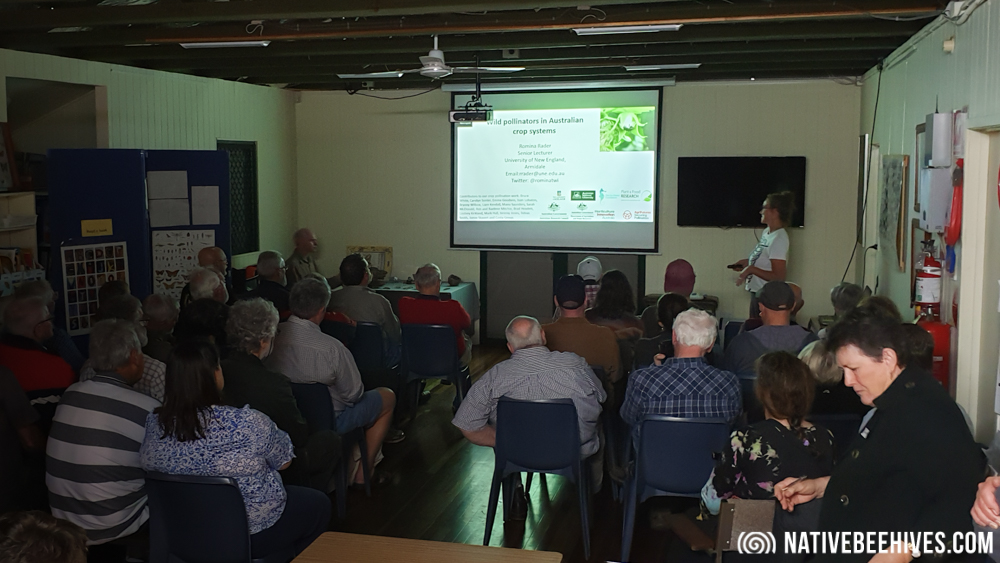
Romina presented some of her work at the July meeting for the Brisbane Branch of the Australian Native Bee Association. It was another full house at the hall, so there’s plenty of interest in the more technical presentations from native bee enthusiasts.
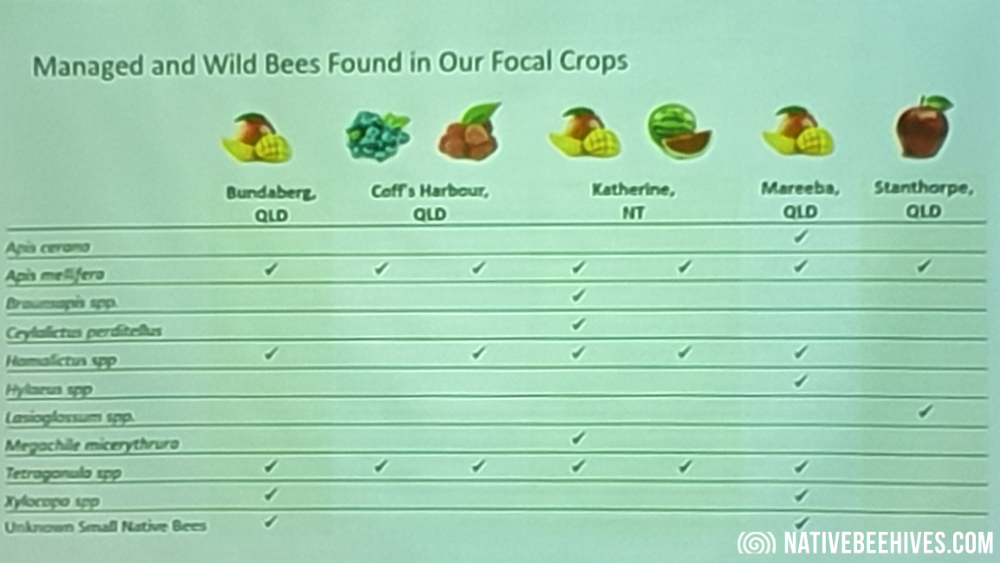
Romina showed quite a few graphs with different statistics, collating a whole bunch of information from different farms and crops, coming up with what would be the best or most efficient pollinators for that particular area or crop.
She talked about how she would bag flowers after a bee or pollinator visited that flower then count the amount of pollen transferred to the flower by the bee and could work out which pollinator did the best job.
It was also found that there would be different pollinators at different times of day, a higher percentage of flies or other insects early morning and afternoon and more bees in the middle of the day. The season could also have an effect on that.
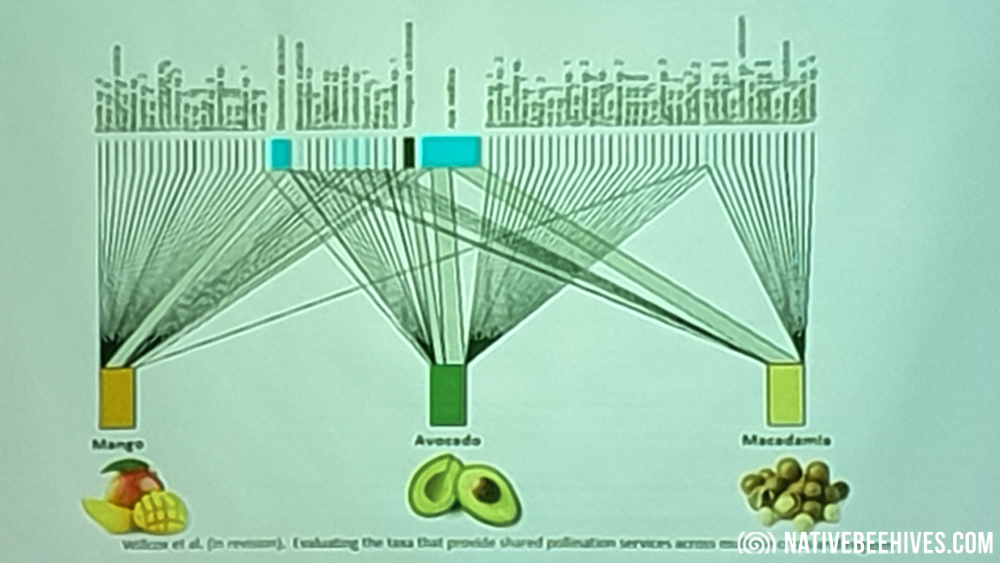
Pollinators Vs Crops
Below graphs – For example, there was quite a lot of Honey Bees and Stingless Bees pollinating crops around the Coffs Harbour area but less Stingless Bees in North Queensland. Honey Bees in Yellow / Stingless Bees in Green / Flies in Orange
Coffs Harbour NSW – Blueberries
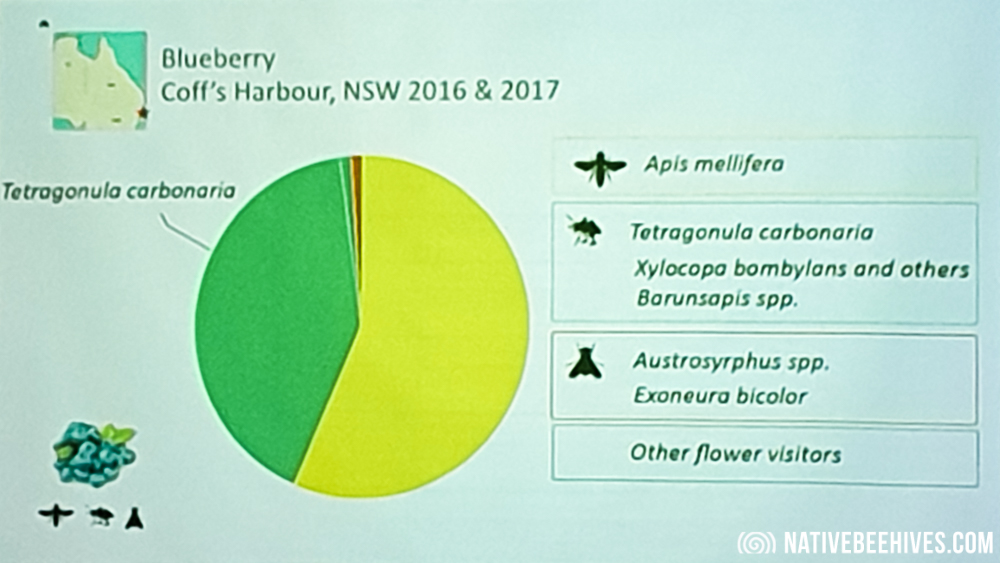
North Qld – Blueberries
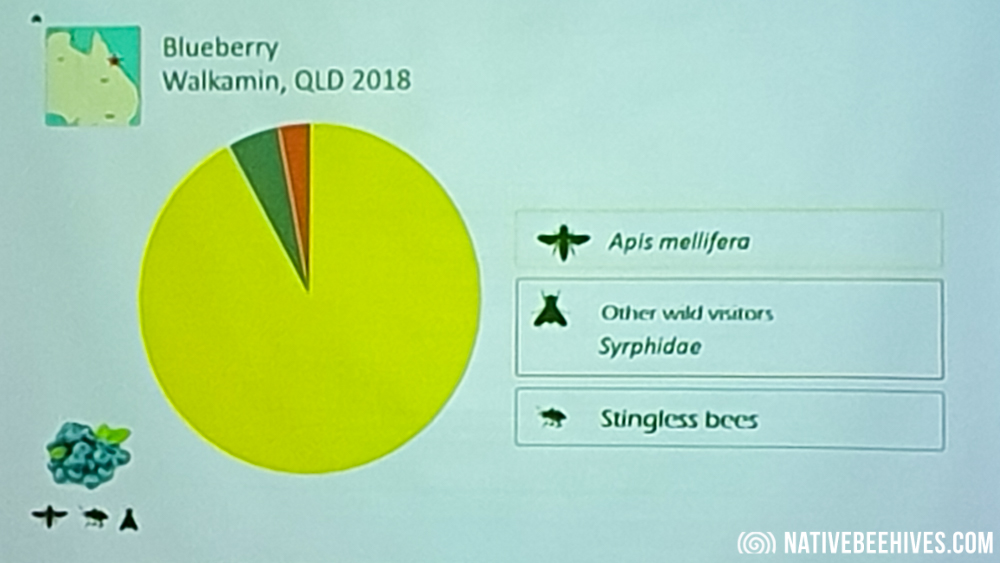
North Qld – Mangos
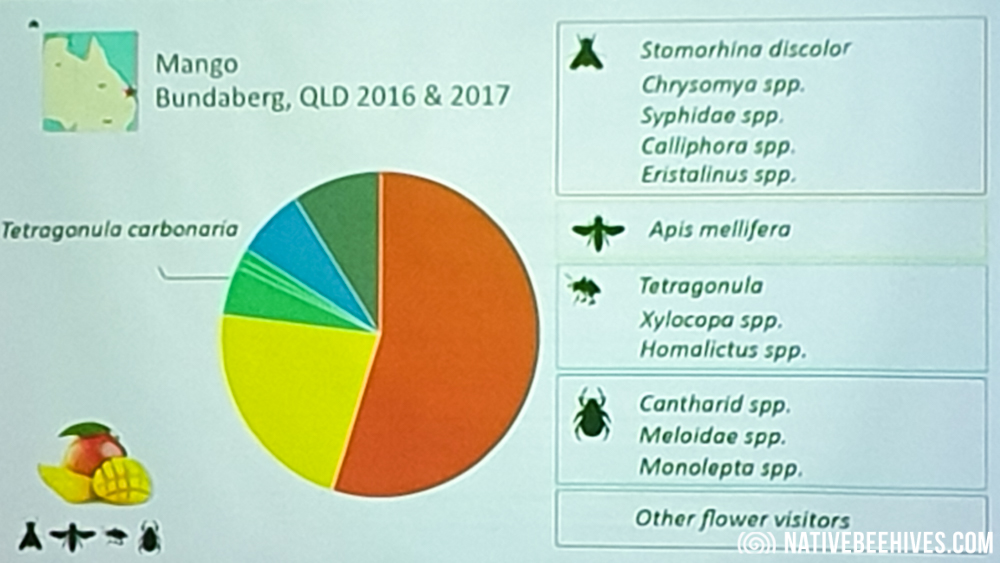
Above – High percentage of flies doing the pollination of Mangos in Bundaberg.
Below – High percentage of Honey Bees doing the pollination of Mangos in Katherine NT
Katherine NT – Mangos
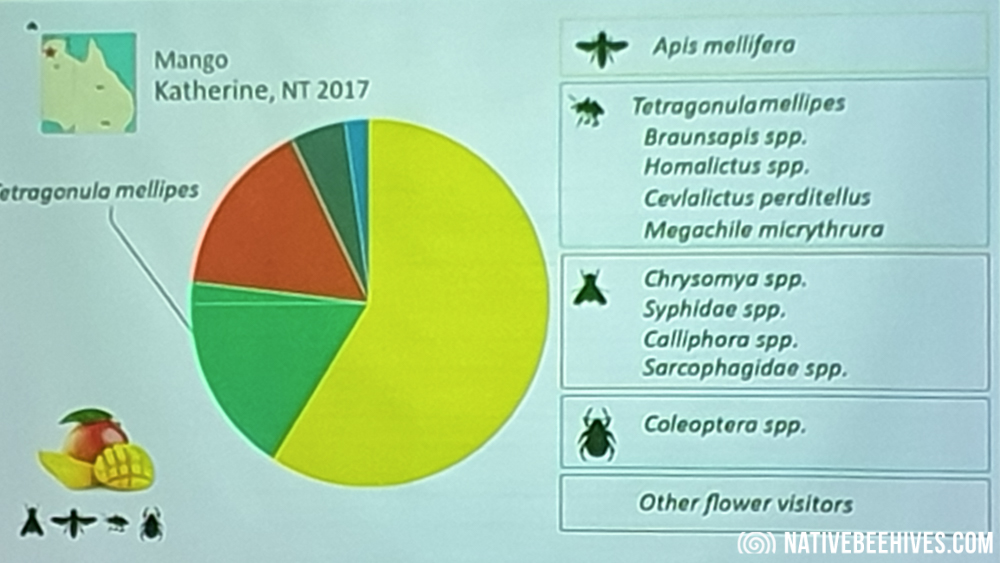
Number of Visits
These photos show the quality of the fruit (Raspberry) and how the number of visits by pollinators can have an effect on the quality of the fruit. The higher number of visits gave a better quality fruit. On some fruits, besides the number of visits, it’s thought that more pollen being transferred in the first visits could have an impact as well.
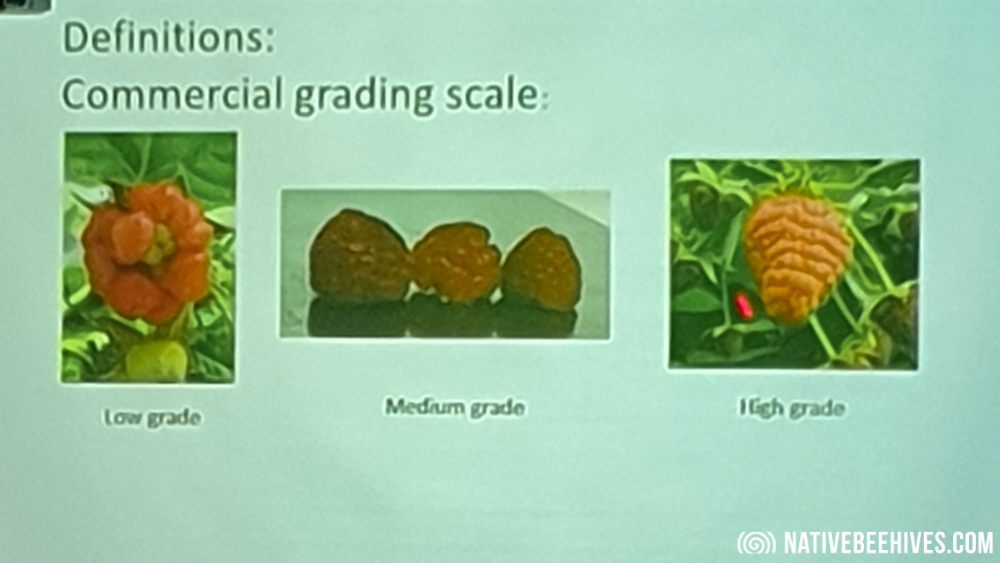
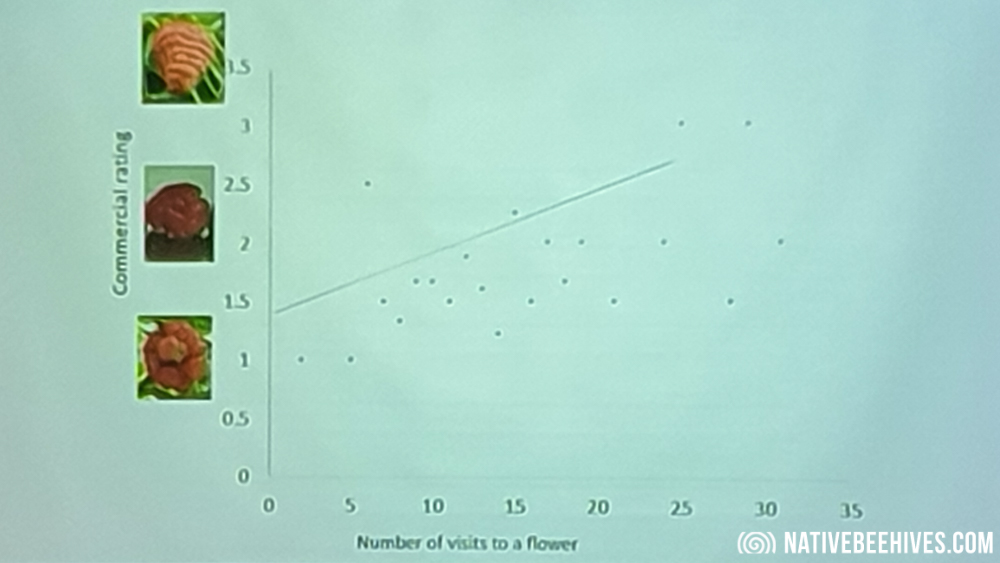
Poly Tunnels
There has been a fair bit of research on Poly tunnels on farms and how they have an impact of how Bees pollinate. Studies found that Honey Bees didn’t do very well in tunnels on Blueberry farms in North Qld.
- There were less pollinators towards the middle of the tunnels and unsure why, could be the higher heat in the middle, less UV light etc.
- Blueberries at the edge of the tunnels produced bigger and better fruit.
- Tunnels are made from different kinds of materials so more research needs to be done in to how different material effects pollination and fruit yields.
- With regard to bee pollination success, shade cloth was better for the bees instead of Polythene and more open the better
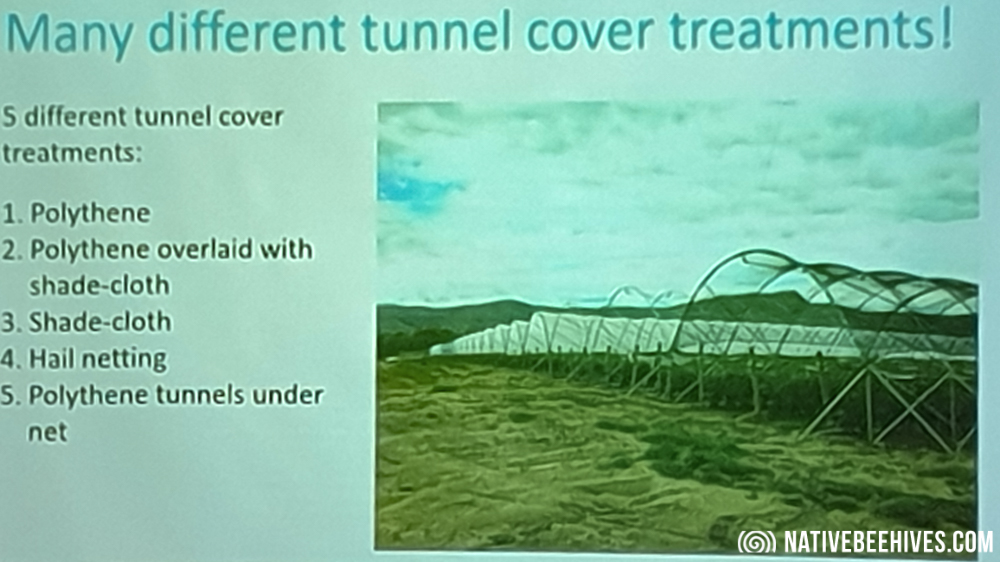
107 Worldwide Crop Study
Romina also talked about a study done where information was put together for 107 crops around the world that benefited from pollinators, mostly insects but also birds and animals. Coffee and Apples had the most diverse amount of pollinators, but there’s really not much information on the subject, very few studies or research have been done and only 26 kinds of crops that had research done with regard to pollinators.
Cross Pollination
It seems to be better to have a more diverse range of crops or fruit trees on a farm so pollinators visit a few different species of tree and transfer different pollens to each. Many years ago it may have been done this way and this seemed to get a better yield of fruit where as now there is intense monoculture or farmers just having the single kind of tree so it improves the farmers processes but could possibly be having a negative impact on quality and yield.
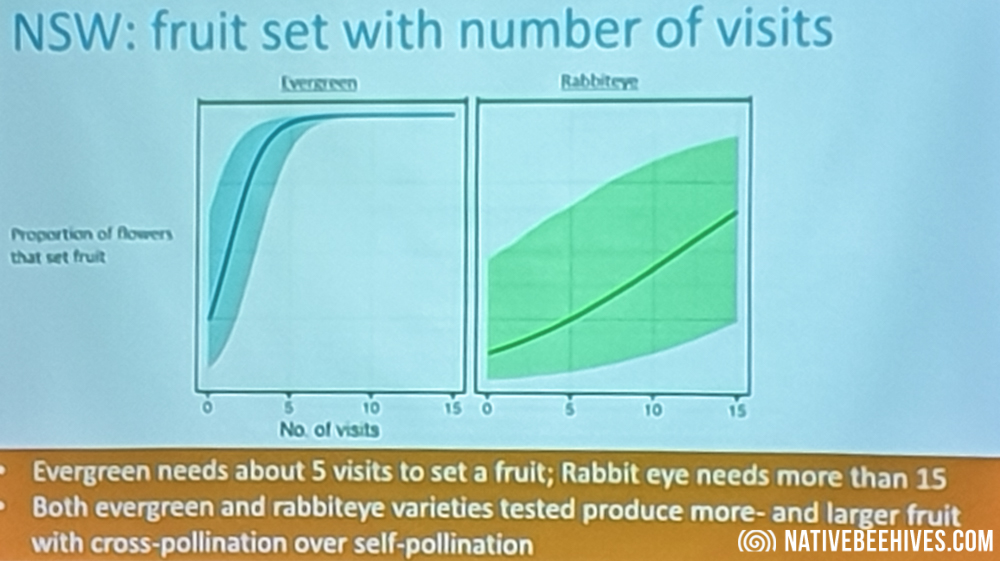
Romina says a lot more research and work needs to be done with pollinators and farmers to try to improve crop yields as there is a lot of unknowns or spaces in information available.
Bumble Bees
Some crops like Tomatoes are hand pollinated costing the industry millions of dollars and there is talk about introducing Bumble Bees which are currently only in Tasmania where they were illegally introduced. While providing a possible pollination solution for some crops the introduction of Bumble Bees could also have a negative effect on other pollinators. It’s possible that the Bumble Bee may arrive in mainland Australia at some point in the future as it could be introduced illegally or by accident.
Mangos and Roadkill
A quick group discussion at the end of the meeting had mention of Mango farms placing roadkill (dead animals) on crop row ends to breed flies that helped with pollination of the Mango trees. We know that flies are great pollinators for Mangoes.
The usual suspects with guest speaker Romina
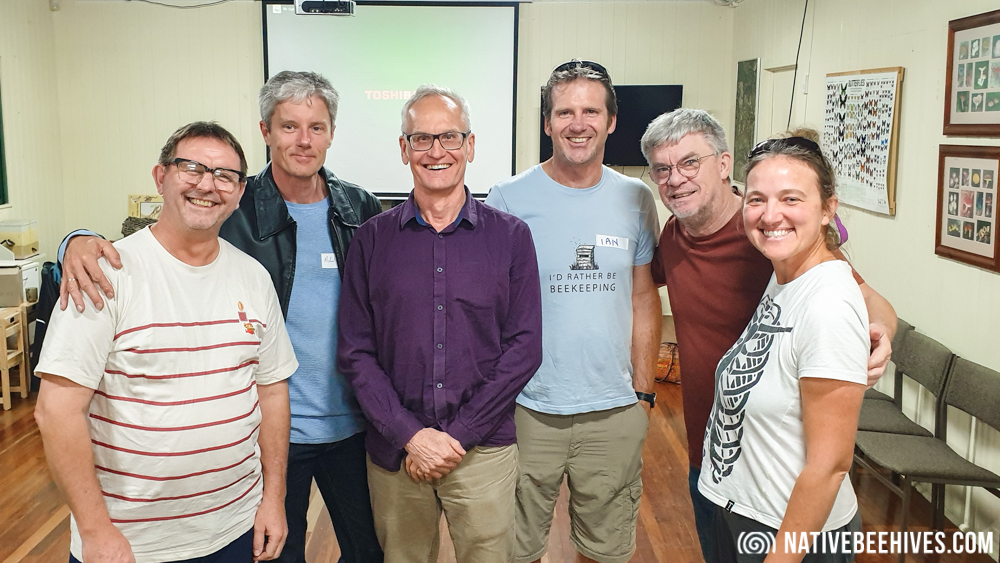
Meeting Info
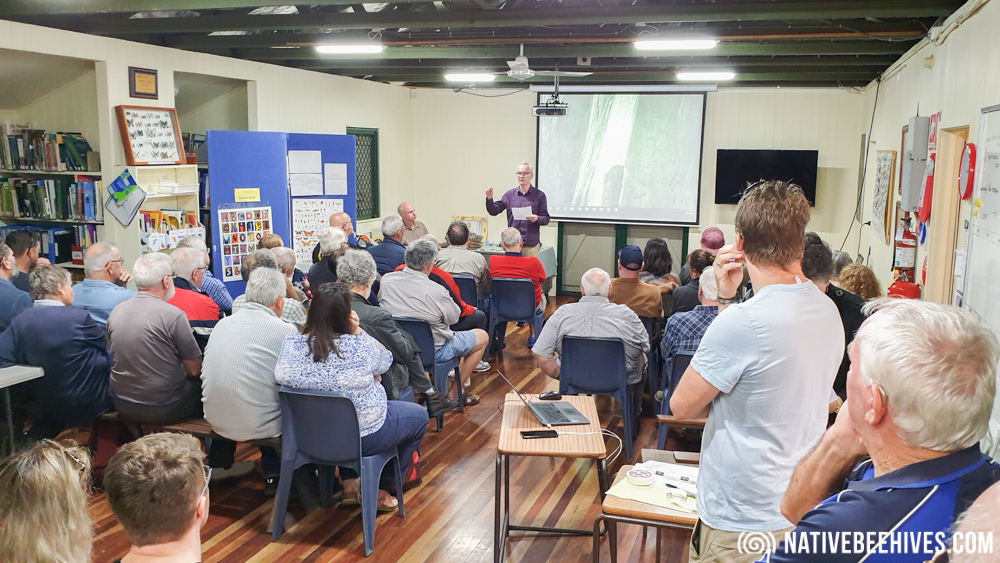
Check out the ANBA website for branches in your area https://australiannativebee.org.au
